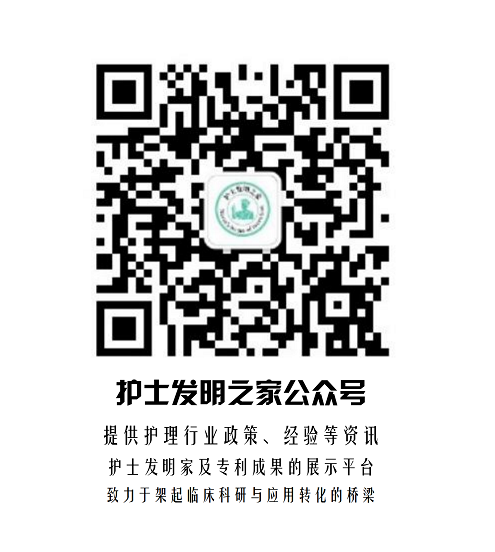美国国家压疮咨询委员会(National Pressure Ulcer Advisory Panel ,NPUAP)2016年4月13日公布了一项术语更改声明:将“压力性溃疡”(Pressure ulcer)更改为“压力性损伤”(Pressure injury),并且更新了压力性损伤的分期系统。

在NPUAP公布的压力性损伤分期系统中,“压力性损伤”替代了“压力性溃疡”。这一更改更加准确地描述了完整或溃疡皮肤处的压力性损伤。在之前的分期系统中,1期和深部组织损伤期用来描述完整的损伤皮肤,其余分期描述开放性溃疡皮肤。由于所有的分期都将损伤纳入了“压力性溃疡”的范畴,这导致了一些混淆。
除了术语的改变,新的分期系统中,阿拉伯数字替代了罗马数字,“可疑深部组织损伤”名称中去除了“可疑”二字。另外还增加了“医疗器械相关性压力性损伤”以及“粘膜压力性损伤”两个定义。
更新的分期系统包括以下定义
压力性损伤是位于骨隆突处、医疗或其它器械下的皮肤和/或软组织的局部损伤。可表现为完整皮肤或开放性溃疡,可能会伴疼痛感。损伤是由于强烈和/或长期存在的压力或压力联合剪切力导致。软组织对压力和剪切力的耐受性可能会受到微环境、营养、灌注、合并症以及软组织情况的影响。
01期
指压不变白红斑,皮肤完整
局部皮肤完好,出现压之不变白的红斑,深色皮肤表现可能不同;指压变白红斑或者感觉、皮温、硬度的改变可能比观察到皮肤改变更先出现。此期的颜色改变不包括紫色或栗色变化,因为这些颜色变化提示可能存在深部组织损伤。
02期
部分皮层缺失伴真皮层暴露
部分皮层缺失伴随真皮层暴露。伤口床有活性、呈粉色或红色、湿润,也可表现为完整的或破损的浆液性水疱。脂肪及深部组织未暴露。无肉芽组织、腐肉、焦痂。该期损伤往往是由于骨盆皮肤微环境破坏和受到剪切力,以及足跟受到的剪切力导致。该分期不能用于描述潮湿相关性皮肤损伤,比如失禁性皮炎,皱褶处皮炎,以及医疗黏胶相关性皮肤损伤或者创伤伤口(皮肤撕脱伤,烧伤,擦伤)。
03期
全层皮肤缺失
全层皮肤缺失,常常可见脂肪、肉芽组织和边缘内卷。可见腐肉和/或焦痂。不同解剖位置的组织损伤的深度存在差异;脂肪丰富的区域会发展成深部伤口。可能会出现潜行或窦道。无筋膜,肌肉,肌腱,韧带,软骨和/或骨暴露。如果腐肉或焦痂掩盖组织缺损的深度,则为不可分期压力性损伤。
04期
全层皮肤和组织缺失
全层皮肤和组织缺失,可见或可直接触及到筋膜、肌肉、肌腱、韧带、软骨或骨头。可见腐肉和/或焦痂。常常会出现边缘内卷,窦道和/或潜行。不同解剖位置的组织损伤的深度存在差异。如果腐肉或焦痂掩盖组织缺损的深度,则为不可分期压力性损伤。
不可分期
全层皮肤和组织缺失,损伤程度被掩盖
全层皮肤和组织缺失,由于被腐肉和/焦痂掩盖,不能确认组织缺失的程度。只有去除足够的腐肉和/或焦痂,才能判断损伤是3期还是4期。缺血肢端或足跟的稳定型焦痂(表现为:干燥,紧密粘附,完整无红斑和波动感)不应去除。
深部组织损伤
持续的指压不变白,颜色为深红色,栗色或紫色
完整或破损的局部皮肤出现持续的指压不变白深红色,栗色或紫色,或表皮分离呈现黑色的伤口床或充血水疱。疼痛和温度变化通常先于颜色改变出现。深色皮肤的颜色表现可能不同。这种损伤是由于强烈和/或长期的压力和剪切力作用于骨骼和肌肉交界面导致。该期伤口可迅速发展暴露组织缺失的实际程度,也可能溶解而不出现组织缺失。如果可见坏死组织、皮下组织、肉芽组织、筋膜、肌肉或其他深层结构,说明这是全皮层的压力性损伤(不可分期、3期或4期)。该分期不可用于描述血管、创伤、神经性伤口或皮肤病。
附加的压力性损伤定义
医疗器械相关性压力性损伤:该概念描述了损伤的原因。医疗器械相关性压力性损伤,是指由于使用用于诊断或治疗的医疗器械而导致的压力性损伤,损伤部位形状通常与医疗器械形状一致。这一类损伤可以根据上述分期系统进行分期。
粘膜压力性损伤
由于使用医疗器械导致相应部位粘膜出现的压力性损伤。由于这些损伤组织的解剖特点,这一类损伤无法进行分期。
NPUAP网站原文地址及原文内容
http://www.npuap.org/resources/educational-and-clinical-resources/npuap-pressure-injury-stages/
NPUAP Pressure Injury Stages
The National Pressure Ulcer Advisory Panel redefined the definition of a pressure injuries during the NPUAP 2016 Staging Consensus Conference that was held April 8-9, 2016 in Rosemont (Chicago), IL.
The updated staging definitions were presented at a meeting of over 400 professionals. Using a consensus format, Dr. Mikel Gray from the University of Virginia adeptly guided the Staging Task Force and meeting participants to consensus on the updated definitions through an interactive discussion and voting process. During the meeting, the participants also validated the new terminology using photographs.
The updated staging system includes the following definitions:
Pressure Injury:
A pressure injury is localized damage to the skin and underlying soft tissue usually over a bony prominence or related to a medical or other device. The injury can present as intact skin or an open ulcer and may be painful. The injury occurs as a result of intense and/or prolonged pressure or pressure in combination with shear. The tolerance of soft tissue for pressure and shear may also be affected by microclimate, nutrition, perfusion, co-morbidities and condition of the soft tissue.
Stage 1 Pressure Injury: Non-blanchable erythema of intact skin
Intact skin with a localized area of non-blanchable erythema, which may appear differently in darkly pigmented skin. Presence of blanchable erythema or changes in sensation, temperature, or firmness may precede visual changes. Color changes do not include purple or maroon discoloration; these may indicate deep tissue pressure injury.
Stage 2 Pressure Injury: Partial-thickness skin loss with exposed dermis
Partial-thickness loss of skin with exposed dermis. The wound bed is viable, pink or red, moist, and may also present as an intact or ruptured serum-filled blister. Adipose (fat) is not visible and deeper tissues are not visible. Granulation tissue, slough and eschar are not present. These injuries commonly result from adverse microclimate and shear in the skin over the pelvis and shear in the heel. This stage should not be used to describe moisture associated skin damage (MASD) including incontinence associated dermatitis (IAD), intertriginous dermatitis (ITD), medical adhesive related skin injury (MARSI), or traumatic wounds (skin tears, burns, abrasions).
Stage 3 Pressure Injury: Full-thickness skin loss
Full-thickness loss of skin, in which adipose (fat) is visible in the ulcer and granulation tissue and epibole (rolled wound edges) are often present. Slough and/or eschar may be visible. The depth of tissue damage varies by anatomical location; areas of significant adiposity can develop deep wounds. Undermining and tunneling may occur. Fascia, muscle, tendon, ligament, cartilage and/or bone are not exposed. If slough or eschar obscures the extent of tissue loss this is an Unstageable Pressure Injury.
Stage 4 Pressure Injury: Full-thickness skin and tissue loss
Full-thickness skin and tissue loss with exposed or directly palpable fascia, muscle, tendon, ligament, cartilage or bone in the ulcer. Slough and/or eschar may be visible. Epibole (rolled edges), undermining and/or tunneling often occur. Depth varies by anatomical location. If slough or eschar obscures the extent of tissue loss this is an Unstageable Pressure Injury.
Unstageable Pressure Injury: Obscured full-thickness skin and tissue loss
Full-thickness skin and tissue loss in which the extent of tissue damage within the ulcer cannot be confirmed because it is obscured by slough or eschar. If slough or eschar is removed, a Stage 3 or Stage 4 pressure injury will be revealed. Stable eschar (i.e. dry, adherent, intact without erythema or fluctuance) on the heel or ischemic limb should not be softened or removed.
Deep Tissue Pressure Injury: Persistent non-blanchable deep red, maroon or purple discoloration
Intact or non-intact skin with localized area of persistent non-blanchable deep red, maroon, purple discoloration or epidermal separation revealing a dark wound bed or blood filled blister. Pain and temperature change often precede skin color changes. Discoloration may appear differently in darkly pigmented skin. This injury results from intense and/or prolonged pressure and shear forces at the bone-muscle interface. The wound may evolve rapidly to reveal the actual extent of tissue injury, or may resolve without tissue loss. If necrotic tissue, subcutaneous tissue, granulation tissue, fascia, muscle or other underlying structures are visible, this indicates a full thickness pressure injury (Unstageable, Stage 3 or Stage 4). Do not use DTPI to describe vascular, traumatic, neuropathic, or dermatologic conditions.
Additional pressure injury definitions.
Medical Device Related Pressure Injury:
This describes an etiology.
Medical device related pressure injuries result from the use of devices designed and applied for diagnostic or therapeutic purposes. The resultant pressure injury generally conforms to the pattern or shape of the device. The injury should be staged using the staging system.
Mucosal Membrane Pressure Injury: Mucosal membrane pressure injury is found on mucous membranes with a history of a medical device in use at the location of the injury. Due to the anatomy of the tissue these ulcers cannot be staged.





